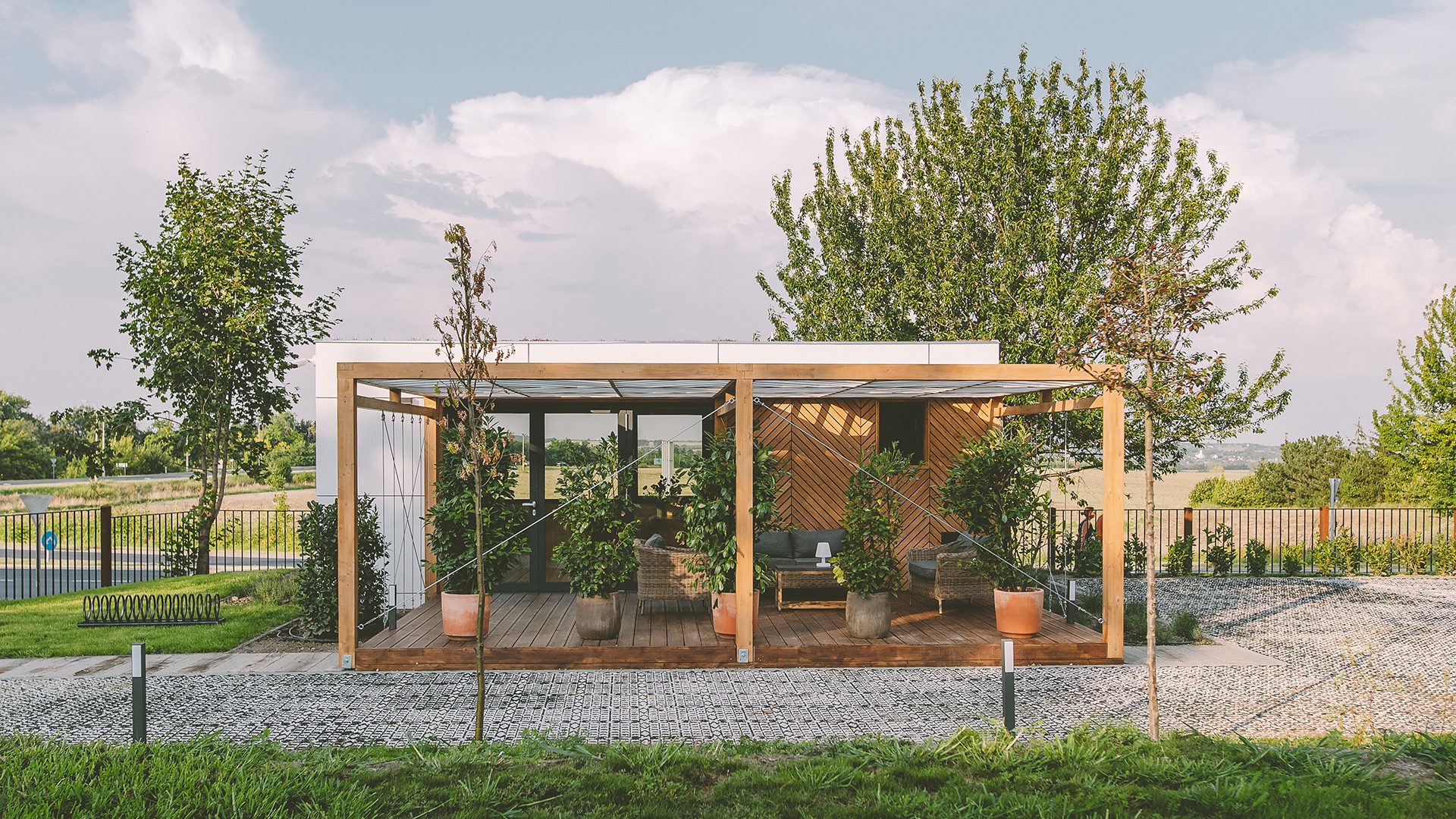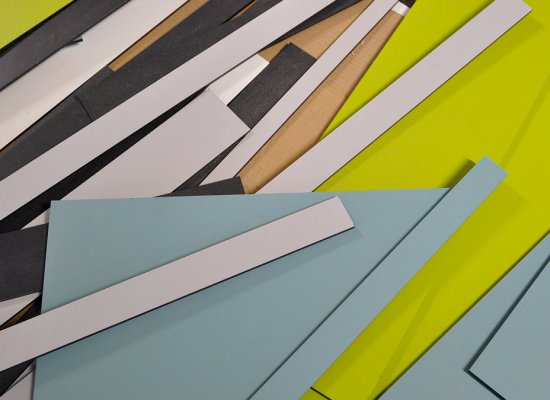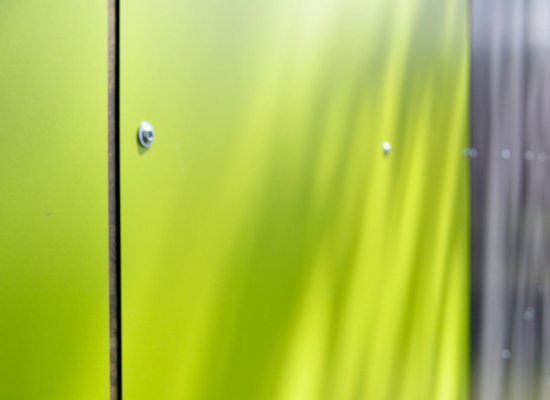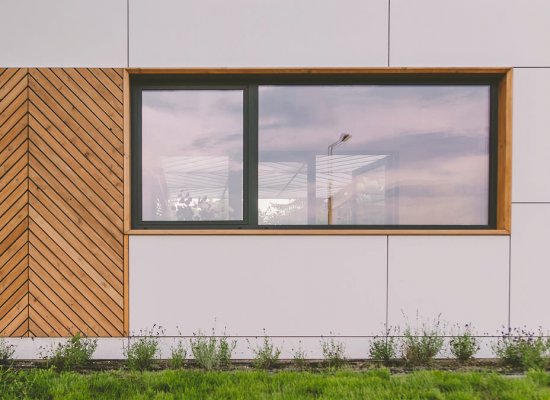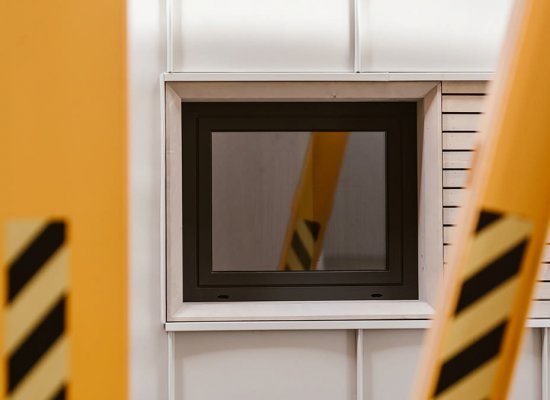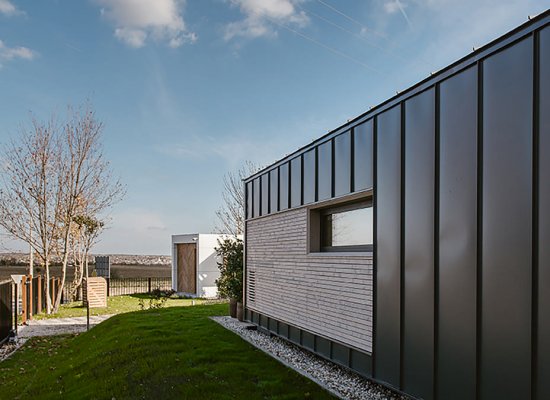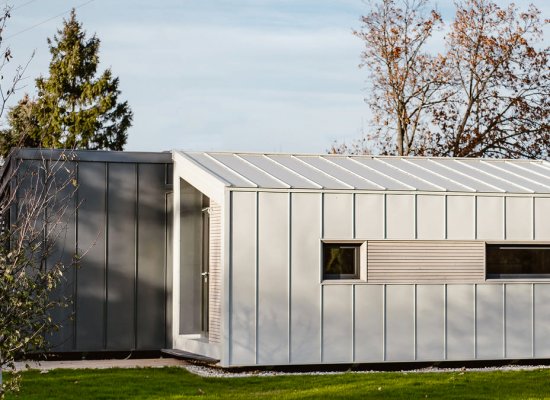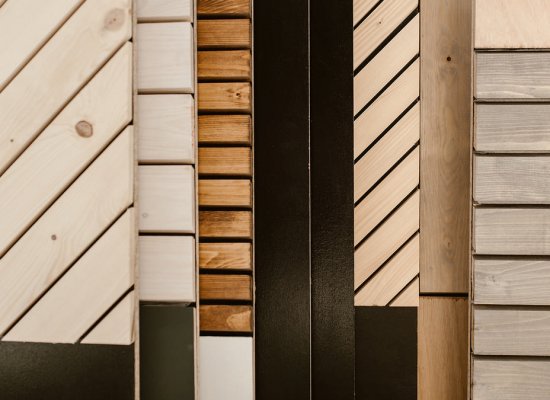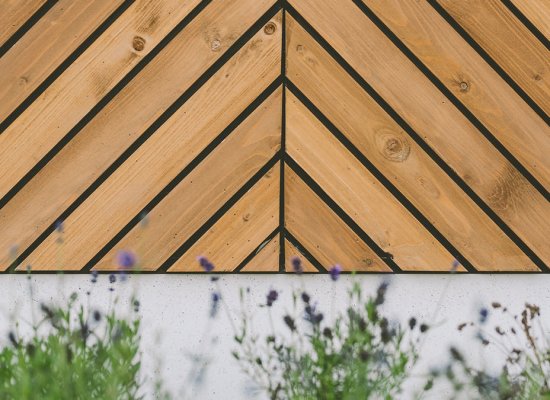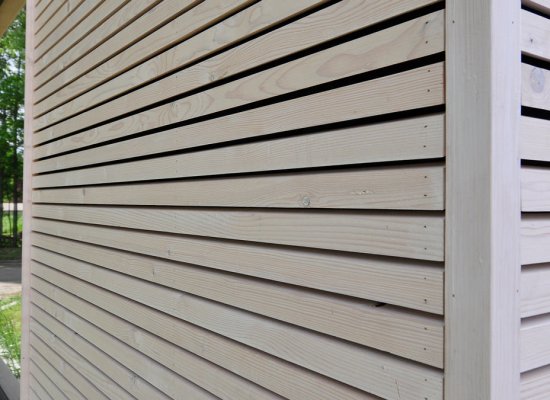The ventilated exterior sheeting has many physical advantages, and furthermore, allows to create a stylish facade. The outermost panel protects the insulation in the summer from direct sunlight and heat, and the circulated air in the ventilated area between the two surfaces cools down the insulation. On top of these advantages, the moisture-transmissive, but insulated panel structure lets us create a variable and diverse facade appearance due to the many sheeting materials available, with different panel layouts.
Available exterior sheeting material sets:
- compact panels and wooden planking
- Lindab prefolded metal sheets and wooden planking
HPL compact sheets
Compact sheets combine the advantages expected from paneled exterior sheetings while it can be processed with regular woodworking tools. From the large panels, many forms and variations can be created, while due to their composition, the panels are UV resistant, and retain their color. HPL is made from natural fibers, impregnated with resin, and compressed at high temperatures.
HPL properties:
- weather and UV resistant
- color retaining
- scratch and chemical resistant
- shock absorbent, hailstorm-proof
- easily cleaned and maintained
- suitable for any exterior application
- cold and heat resistance from -80 to 180 °C
- can be fastened with glue or screws
HPL sheets are available in three basic colors (white, light grey, dark grey), with a thickness of 6mm. Many additional colors are available as choosable extras.
Lindab pre-folded metal sheets (SRP Click)
Planking
Horizontal, vertical, or angled planks with gaps between them can be installed with nails or screws.
Available planking types: poplar, redwood, and heat-treated poplar (thermowood).
In case of heat-treated thermowood planking, durability is achieved with the heat-treatment process, so that the wood itself can absorb less water. The cells of the wood are burnt, resulting in less water absorption. Sugar and other materials are also burnt out, so the material is not susceptible to pests, insects and other fungi. In order to maximize durability, Remmers Pflege-Öl linseed oil is applied in two coats.
In case of poplar or redwood planking, finishing is paramount in order to protect the wood. Most importantly, that means moisture retention, pest and fire protection and also physical appearance. Planks are finished with a Remmers Adolit BQ30 transparent protective coat, and then two coats of Remmers Induline GW-310, water-based paint.
UV radiation due to intensive sunlight causes a natural color desaturation of the wood. Because of this, wooden surfaces should be refinished every three years.

